Field Notes: An Oak with Special Roots
October 26, 2020 2:38 pm
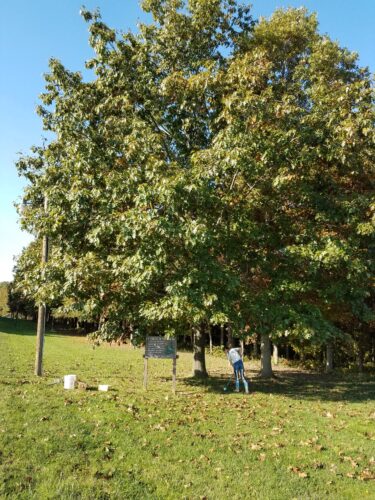
by Patti Nylander, Senior Area Forester
Every year the Virginia Department of Forestry (VDOF) puts out the call to citizens across the Commonwealth to collect acorns to be planted at the Augusta Forestry Center (AFC) in Crimora for next year’s seedling crop. The acorns are prepped for planting through a rigorous process — to separate the good nuts from the bad — that involves a huge fan, a 55-gallon drum of water and a short stay in a cold storage facility. Once the acorns are prepared, they are loaded into a machine and planted in the fall.
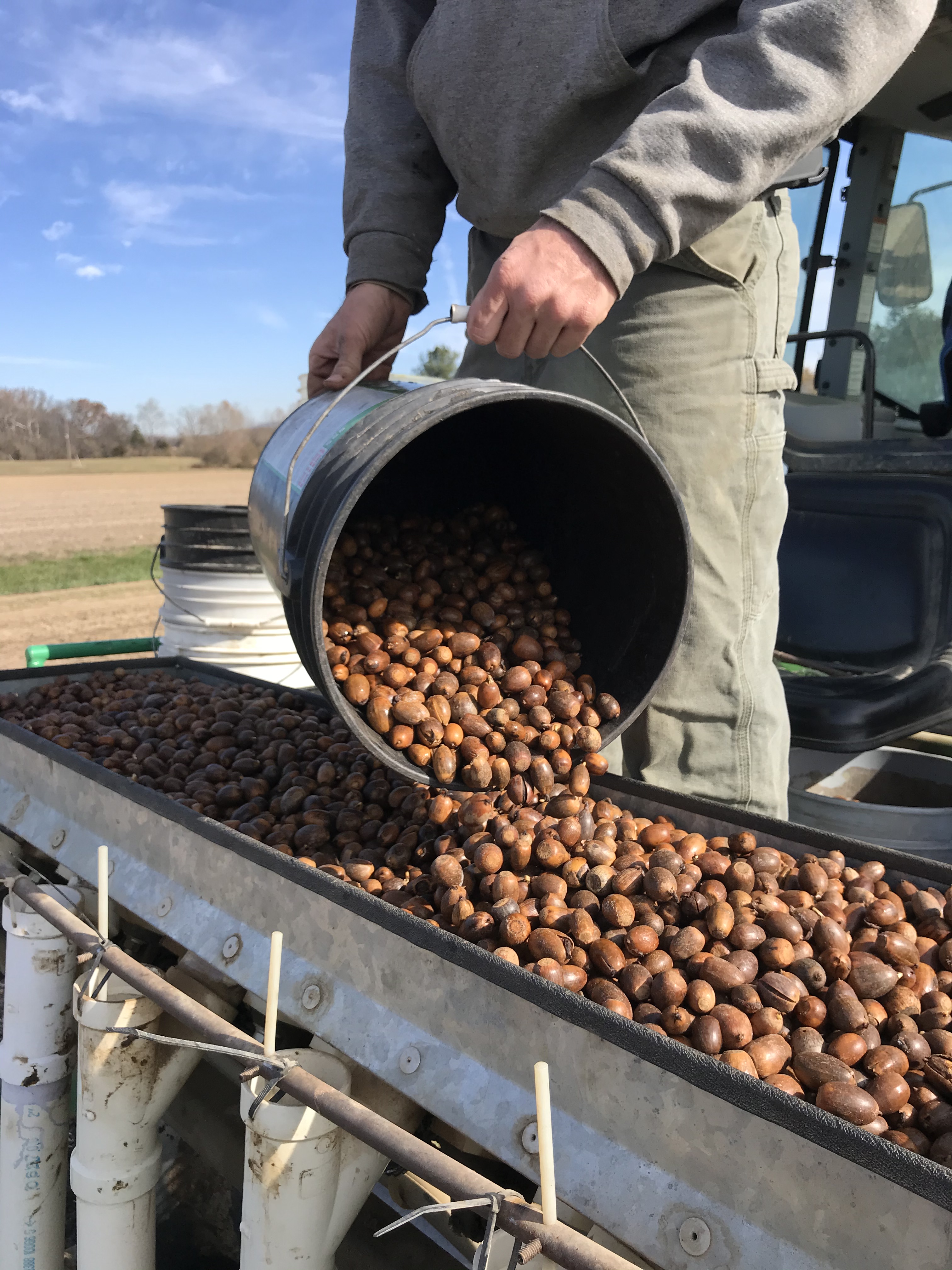
The seedlings are grown, fertilized, weeded and watered all through the summer. Following some good heavy frosts, the trees are lifted, boxed, shipped, and planted throughout the landscape. It’s an incredible process, and I have always been fascinated by the amount of work that goes into producing a one-year-old seedling to sell to a landowner or homeowner. Just about all of the work is still done by hand, from collecting acorns to boxing the trees.
I try to do my part by bringing acorns that people have collected back to the nursery in Crimora, which is where my office is also located. I’m always on the lookout for some good “collecting trees” for the nursery staff, too — trees in church yards, playgrounds, city parks, and even homeowners’ yards (with permission). You can’t imagine how happy a landowner is to learn that someone else will actually come and collect those “pesky walnuts” or “murderous chestnuts” from their yards!
This year, I came across a special tree — a Northern red oak (Quercus rubra) that was planted as part of a State Lands Project almost 30 years ago. This oak on the edge of the planting area was loaded with acorns this year! I decided to come back to this tree and collect my obligatory bucket’s worth of acorns to give to the staff at the nursery.
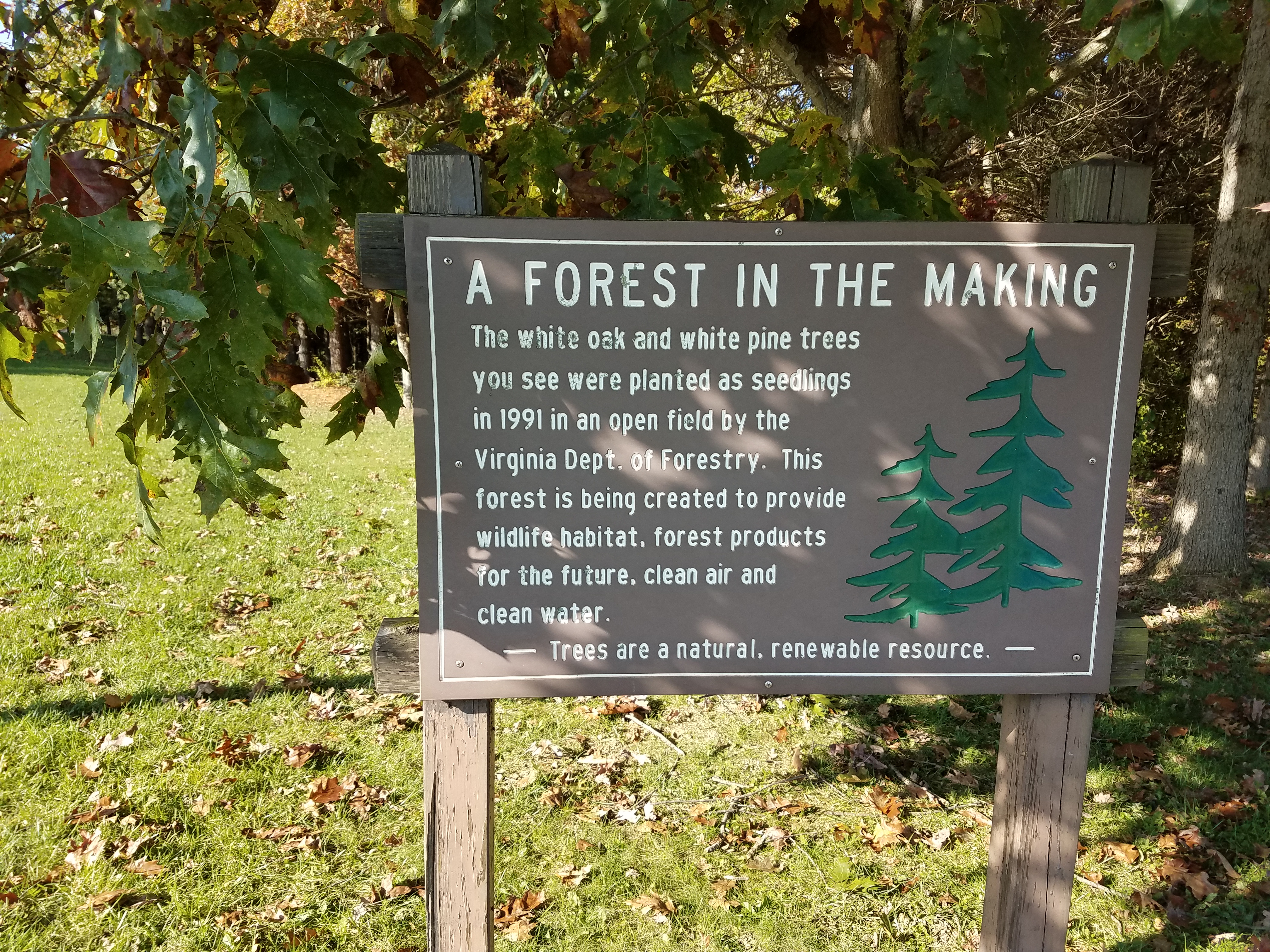
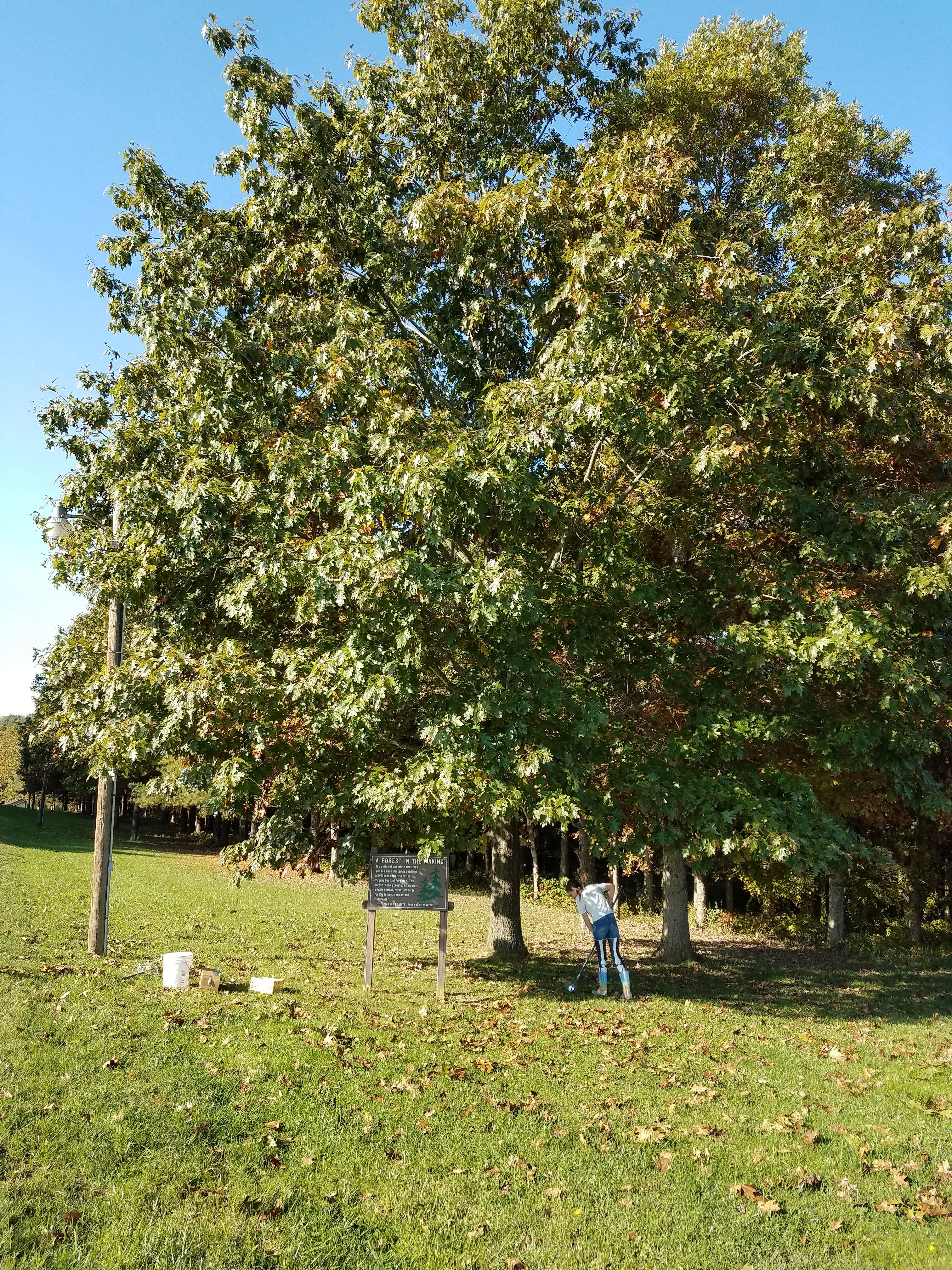
This tree is very special because it was “born” at Augusta Forestry Center. In 1991, this planting project was completed using trees from the VDOF nursery. Now, almost 30 years later, I am taking the acorns back to the nursery to be planted for next year’s crop.
Unlike our loblolly pine seedlings, where we know exactly where every seedling comes from in our orchard, the acorns that arrive at the nursery are “wild” collections – they come from all over Virginia and are separated only by species. Therefore, in most cases, we don’t know the parentage of the oak seedlings we sell. (Occasionally, acorns collected from a specific tree, such as the Jamestown cherrybark oak, ARE planted and sold separately because of their desirable parentage.)
I made my way back to the Northern red oak with my daughter to collect the acorns and was a little disappointed to see that a lot were still up in the tree. Many had fallen, but the area had been mowed in the last week, so a lot of the nuts we found had been hacked in half. Nevertheless, we enjoyed a beautiful fall day using our high-tech nut rollers to collect a small number of acorns that will be planted with all of the other Northern red oak acorns this fall.
Although my acorns will not be set aside and sold as a special tree, and many will end up failing the good nut/bad nut test, they still represent the impact VDOF field staff has in Virginia. Mark Hollberg was the VDOF area forester who worked in Augusta County before I transferred here 17 years ago. In fulfilling the expectations of his job, he planted these trees to improve the environment, add scenic beauty and reduce mowing on a State Lands property, as well as to educate people about the benefits of trees. The acorns that are planted this fall will give rise to oak seedlings that will be planted as part of another project that VDOF will have a hand in coordinating.
One can hope that in another 29 years, someone in the next generation of VDOF field staff will find themselves under an oak whose roots are known and can be traced back to a seedling planted at our nursery.
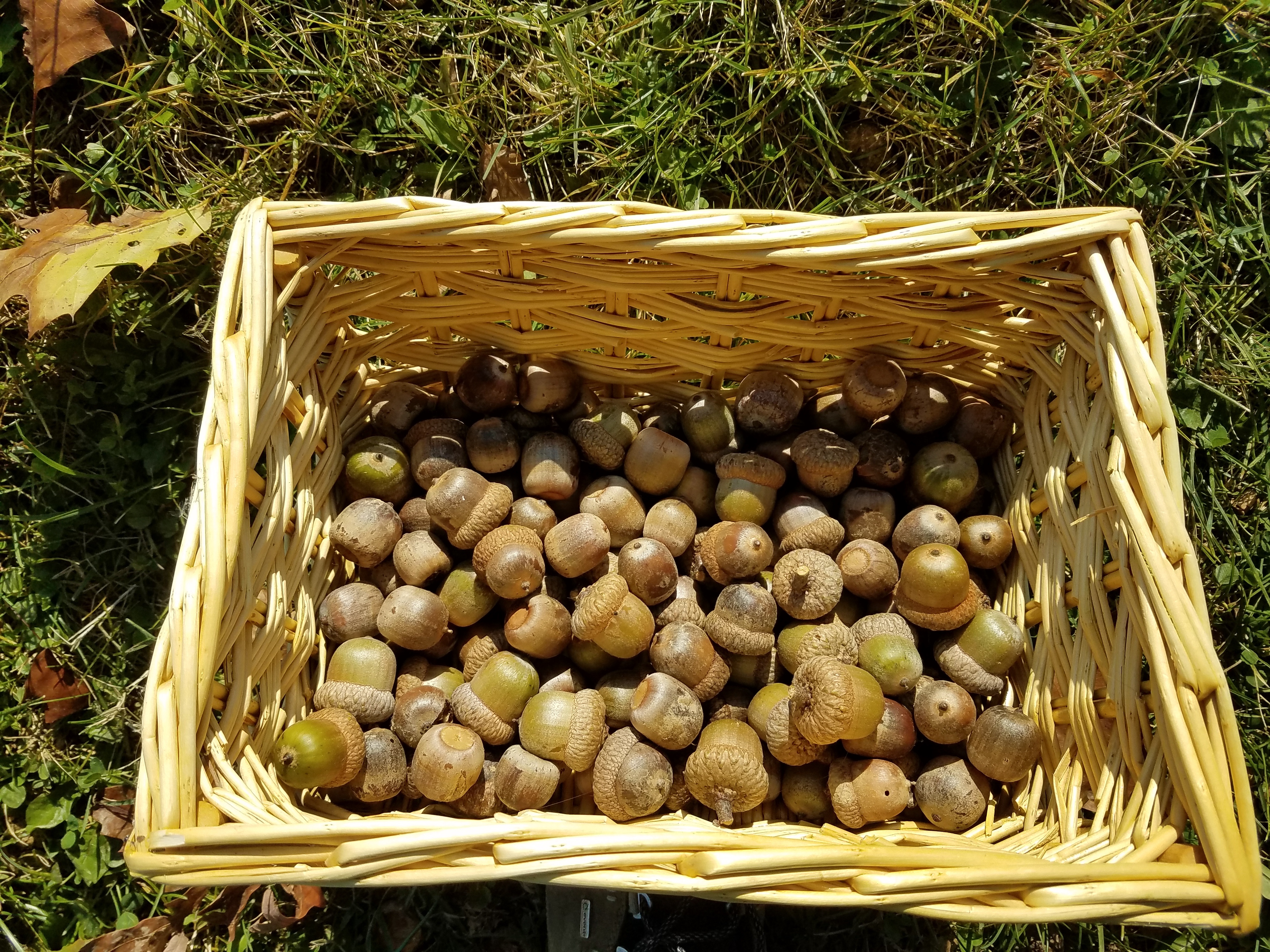
Tags: Acorns/Nuts, Oak, Tree Planting
Category: Nurseries
